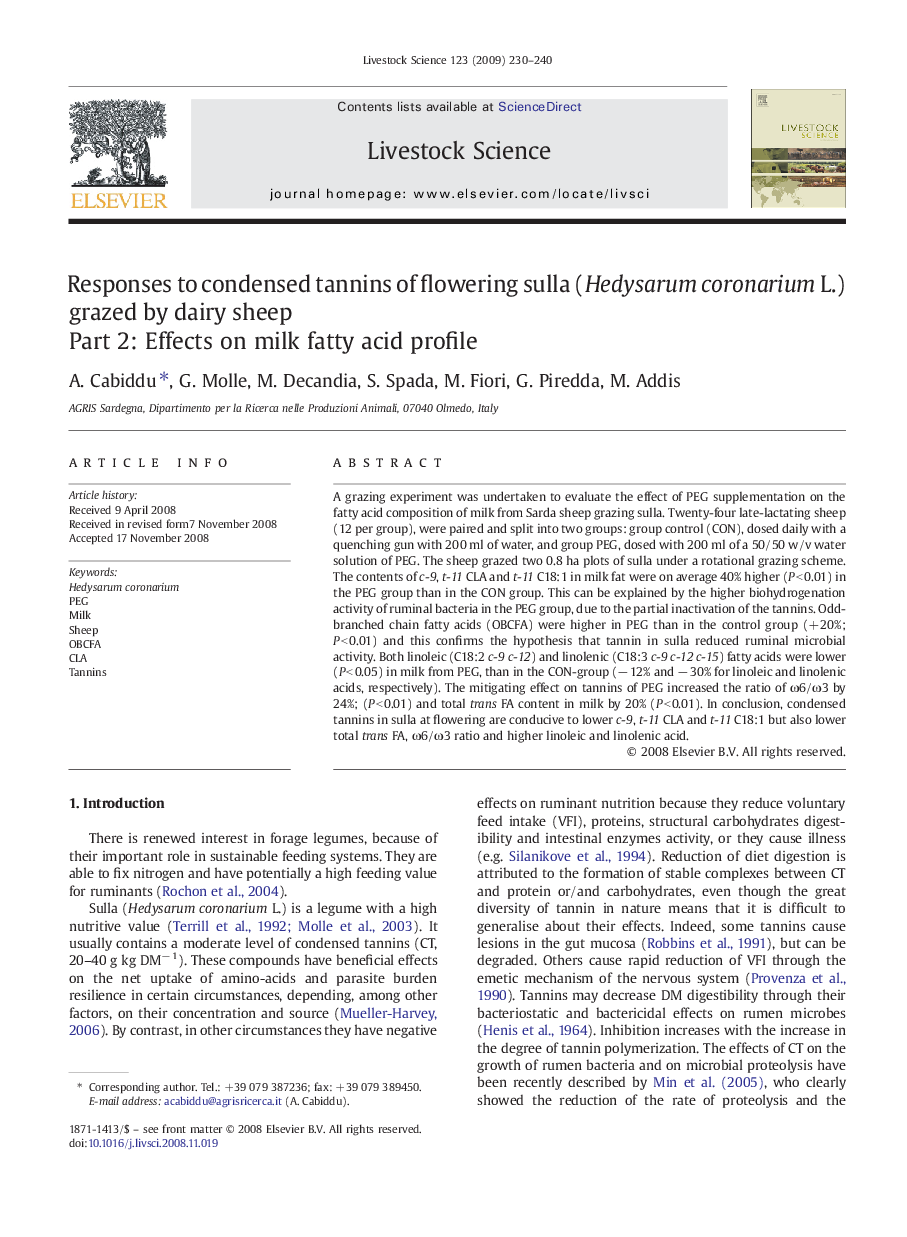| Article ID | Journal | Published Year | Pages | File Type |
|---|---|---|---|---|
| 2447977 | Livestock Science | 2009 | 11 Pages |
A grazing experiment was undertaken to evaluate the effect of PEG supplementation on the fatty acid composition of milk from Sarda sheep grazing sulla. Twenty-four late-lactating sheep (12 per group), were paired and split into two groups: group control (CON), dosed daily with a quenching gun with 200 ml of water, and group PEG, dosed with 200 ml of a 50/50 w/v water solution of PEG. The sheep grazed two 0.8 ha plots of sulla under a rotational grazing scheme.The contents of c-9, t-11 CLA and t-11 C18:1 in milk fat were on average 40% higher (P < 0.01) in the PEG group than in the CON group. This can be explained by the higher biohydrogenation activity of ruminal bacteria in the PEG group, due to the partial inactivation of the tannins. Odd-branched chain fatty acids (OBCFA) were higher in PEG than in the control group (+ 20%; P < 0.01) and this confirms the hypothesis that tannin in sulla reduced ruminal microbial activity. Both linoleic (C18:2 c-9 c-12) and linolenic (C18:3 c-9 c-12 c-15) fatty acids were lower (P < 0.05) in milk from PEG, than in the CON-group (− 12% and − 30% for linoleic and linolenic acids, respectively). The mitigating effect on tannins of PEG increased the ratio of ω6/ω3 by 24%; (P < 0.01) and total trans FA content in milk by 20% (P < 0.01). In conclusion, condensed tannins in sulla at flowering are conducive to lower c-9, t-11 CLA and t-11 C18:1 but also lower total trans FA, ω6/ω3 ratio and higher linoleic and linolenic acid.
